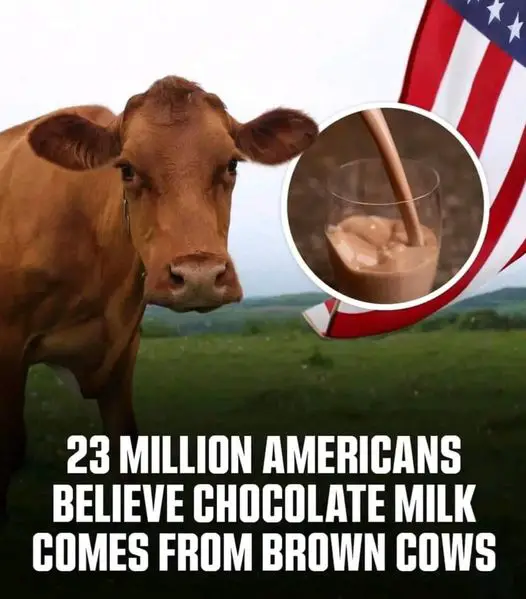It’s hard to believe that in an era of advanced education and easy access to information, some people still hold misconceptions about common food items. Yet, a survey revealed that 7% of American adults think chocolate milk comes from brown cows. That number translates to millions of people. But why is this misconception so prevalent, and what does it say about general food education in the United States?
The Survey: Surprising Findings
The original survey conducted by the Innovation Center of U.S. Dairy aimed to understand how much Americans know about their food, and the results were quite surprising. While it’s easy to laugh at such misconceptions, the findings highlight a broader issue — many Americans are disconnected from the agricultural processes that bring food to their tables. In today’s urbanized world, fewer people have direct ties to farms or agricultural education, and this disconnect can lead to misunderstandings about where food comes from.
Misinformation and Food Education
It’s easy to dismiss the belief that chocolate milk comes from brown cows as just a silly misunderstanding, but it points to a deeper issue. According to a study conducted by the Department of Agriculture in 2017, about one in five adults doesn’t know that hamburgers come from beef. These misconceptions stem from the fact that many Americans are distanced from food production. With fewer family farms and agricultural education programs than in the past, younger generations are growing up without a clear understanding of the food supply chain.
When it comes to dairy, there’s another layer of confusion. Many people might not realize the processing that goes into producing the food on their plates or in their glasses. Chocolate milk is simply regular cow’s milk with cocoa and sweeteners added. Yet, without clear knowledge of how food is processed, it’s not difficult for people to fall into erroneous assumptions.
Cultural Factors at Play
There are also cultural and social factors that contribute to this belief. Chocolate milk is widely marketed as a fun, flavorful drink, often associated with childhood. The imagery of a playful cow might make it easy to imagine that this delicious drink comes straight from the farm, especially for those who haven’t learned otherwise. This disconnect between food and its origins can lead to a variety of misconceptions, chocolate milk from brown cows being just one of many.
“People simply don’t know where their food comes from,” says Lisa Matthews, an expert in food literacy. “They are so used to seeing packaged food products on store shelves that they rarely stop to think about how it’s made.”
Why It Matters: The Importance of Food Literacy
Food literacy, or the understanding of where food comes from and how it’s produced, is becoming an increasingly important topic. Misinformation about food doesn’t just lead to humorous misunderstandings like chocolate milk from brown cows. It can affect people’s dietary choices, their views on sustainability, and their overall health. If consumers don’t understand the basic facts about the foods they eat, they’re less likely to make informed decisions.
Educational initiatives are being put in place to address this gap. Some schools are incorporating food education into their curriculums, and there is a growing trend of community gardens and urban farms. These efforts aim to reestablish the connection between people and their food, particularly among younger generations.
What Can Be Done?
To address misconceptions like these, it’s important to introduce food education early. Children should learn not only how to eat healthy but also about the origins of the food they consume. Programs like farm-to-school initiatives are great examples of how schools can educate students about food production, bringing agricultural education back into urban settings.
Adults, too, can benefit from more accessible food literacy programs. Community initiatives that encourage people to visit farms, participate in gardening, or even engage in local food production can help bridge the gap between consumers and the food system. Understanding food sources isn’t just about avoiding humorous misunderstandings; it’s about fostering a healthier, more informed society.
Conclusion: Chocolate Milk, Brown Cows, and Beyond
While the idea of chocolate milk coming from brown cows may seem funny, it underscores the importance of food literacy in today’s world. As urbanization increases, fewer people understand where their food comes from or how it is produced. Educating both children and adults about food sources, processing, and sustainability is essential. When people are more informed, they’re more likely to make healthier and more sustainable choices — and less likely to fall for food myths.

